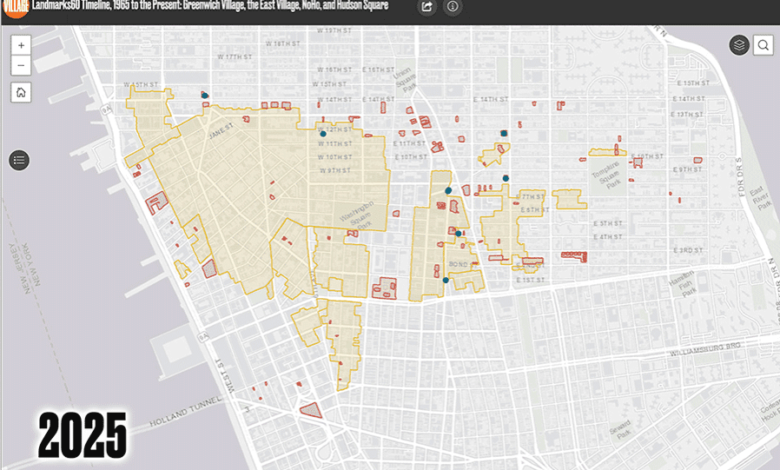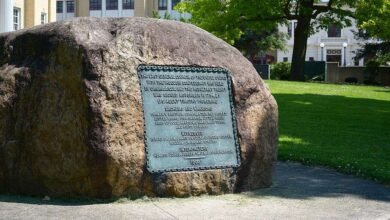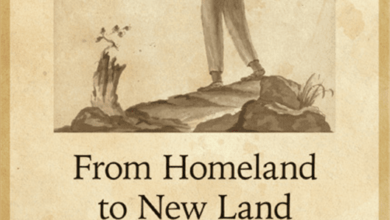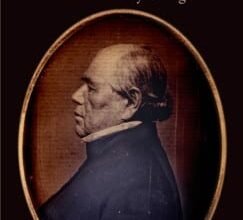Greenwich Village, the East Village, and NoHo: Historic Districts History


 The New York City Landmarks Law was signed into law on April 19, 1965, by Mayor Robert Wagner. Since then, about 38,000 properties in all five boroughs have been protected under the law.
The New York City Landmarks Law was signed into law on April 19, 1965, by Mayor Robert Wagner. Since then, about 38,000 properties in all five boroughs have been protected under the law.
Many of these buildings and sites are contained within the city’s 157 historic districts and historic district extensions, 16 of which are located in the neighborhoods of Greenwich Village, the East Village, and NoHo.
These neighborhoods contain some of the earliest historic district designations, the district with the greatest number of buildings, and the district extension with the second fewest number of buildings (just two!).
Each district is uniquely significant to the history of New York City — that ten percent are located in these neighborhoods speaks to the architectural and cultural richness of the area.
Village Preservation has recently published an interactive map that traces all of the historic districts and individual, scenic, and interior landmark designations in these neighborhoods since the enactment of the NYC Landmarks Law, allowing viewers to explore these designations over time.
Let’s take a closer look at the historic districts designated in Greenwich Village, the East Village, and NoHo:
1966 – Charlton-King-Vandam Historic District
The first district to be designated in these neighborhoods, the Charlton-King-Vandam Historic District was only the fourth district designated citywide, less than a year after the Landmarks Law took effect. It contains the densest concentration of Federal-style row houses in New York City.
1967 – MacDougal-Sullivan Gardens Historic District
This unique district features 22 colorful buildings, 10 facing Sullivan Street and 12 facing MacDougal Street, which share a communal private courtyard garden.
1969 – St. Mark’s Historic District
The first district to extend protections into a portion of the East Village, the St. Mark’s Historic District includes Manhattan’s oldest house still in use as a residence, New York’s oldest site of continuous religious worship, and Stuyvesant Street, Manhattan’s only true east-west street.
1969 – Greenwich Village Historic District
The largest historic district (by number of buildings, nearly 2,200) in New York City, preservation and oversight of the Greenwich Village Historic District remains at the core of Village Preservation’s mission.
1984 – St. Mark’s Historic District Extension
This petite district extension, which gave overdue protections to two buildings at the end of the row contained within the original St. Mark’s Historic District, designated in 1969, is second only to the Gramercy Park Historic District Extension (comprising exactly one building) in its diminutive nature.
1999 – NoHo Historic District
The approximately 125-building NoHo Historic District “represents the period of New York City’s commercial history from the early 1850s to the 1910s, when this section prospered as one of its major retail and wholesale dry goods centers.” This was the first of three historic district designations in the area.
2003 – Gansevoort Market Historic District
The Gansevoort Market Historic District is “distinctive for its architectural character which reflects the area’s long history of continuous, varied use as a place of dwelling, industry, and commerce, particularly as a marketplace, and its urban layout.”
2003 – NoHo East Historic District
Village Preservation advocated for expanded historic district protections in NoHo, the first phase of which was achieved with the designation of the NoHo East Historic District, followed by the NoHo Historic District Extension five years later.
2006 – Greenwich Village Historic District Extension I
Greenwich Village Historic District Extension I was designated in 2006 in response to Village Preservation and other groups’ proposal for landmarking the Far West Village, broadening protections into this part of the neighborhood for the first time.
2006 – Weehawken Historic District
This small district, located along West Street adjacent to the Hudson River, “represents several phases of construction spanning a century of development along Greenwich Village’s Hudson River waterfront, from 1830 to 1938,” bringing further protections to the Far West Village.
2008 – NoHo Historic District Extension
Five years after historic district protections were extended in NoHo by way of the NoHo East Historic District, this second extension was approved, encompassing the area of NoHo centered on Bond, Great Jones, and East 4th Streets between Lafayette Street and the Bowery plus the northeast corner of Bleecker Street and Lafayette Street.
2010 – Greenwich Village Historic District Extension II
This was the first district designated as part of Village Preservation’s campaign, launched in 2006, to extend landmark protections to the South Village, the once-predominantly immigrant section of Greenwich Village south of Washington Square and West 4th Street, between LaGuardia Place and Seventh Avenue South.
2012 – East 10th Street Historic District
The East 10th Street Historic District was designated in January 2012. It encompasses 26 elegant row houses located on the north side of the street, along the northern edge of Tompkins Square Park.
2012 – East Village/Lower East Side Historic District
The Landmarks Preservation Commission designated this historic district in October 2012, making it the largest in the East Village to date.
2013 – South Village Historic District
The South Village Historic District was designated following a proposal originally submitted by Village Preservation in 2006. It constitutes one of multiple phases to achieve landmark designation for a larger area of the South Village, renowned for its rich history in connection to immigrants, countercultural movements, and its early LGBT and African-American communities. This district was the largest expansion of landmark protections in Greenwich Village since 1969.
2016 – Sullivan-Thompson Historic District
The Sullivan-Thompson Historic District was landmarked in 2016 as the final phase of a ten-year-long campaign led by Village Preservation to designate the South Village as an historic district.
2020s?– None Yet
No new districts have been established in nearly 10 years, but preservation activists continue to fight for landmark designations in unprotected parts of their neighborhoods, especially in areas that have a bounty of historic buildings but relatively few designated historic districts, like the East Village and South of Union Square.
Advocates are encouraging people to tell the City you support landmarking the proposed South of Union Square Historic District.
And don’t forget, you can explore all of the designations in these neighborhoods to date via the interactive Landmarks Timeline Map.
A version of the essay by Dena Tasse-Winter first appeared in Village Preservation’s Off the Grid Preservation Blog.
Founded in 1980, Village Preservation works to document, celebrate, and preserve the special architectural and cultural heritage of Greenwich Village, the East Village, and NoHo. Learn more about them at their website villagepresevation.org
Source link




